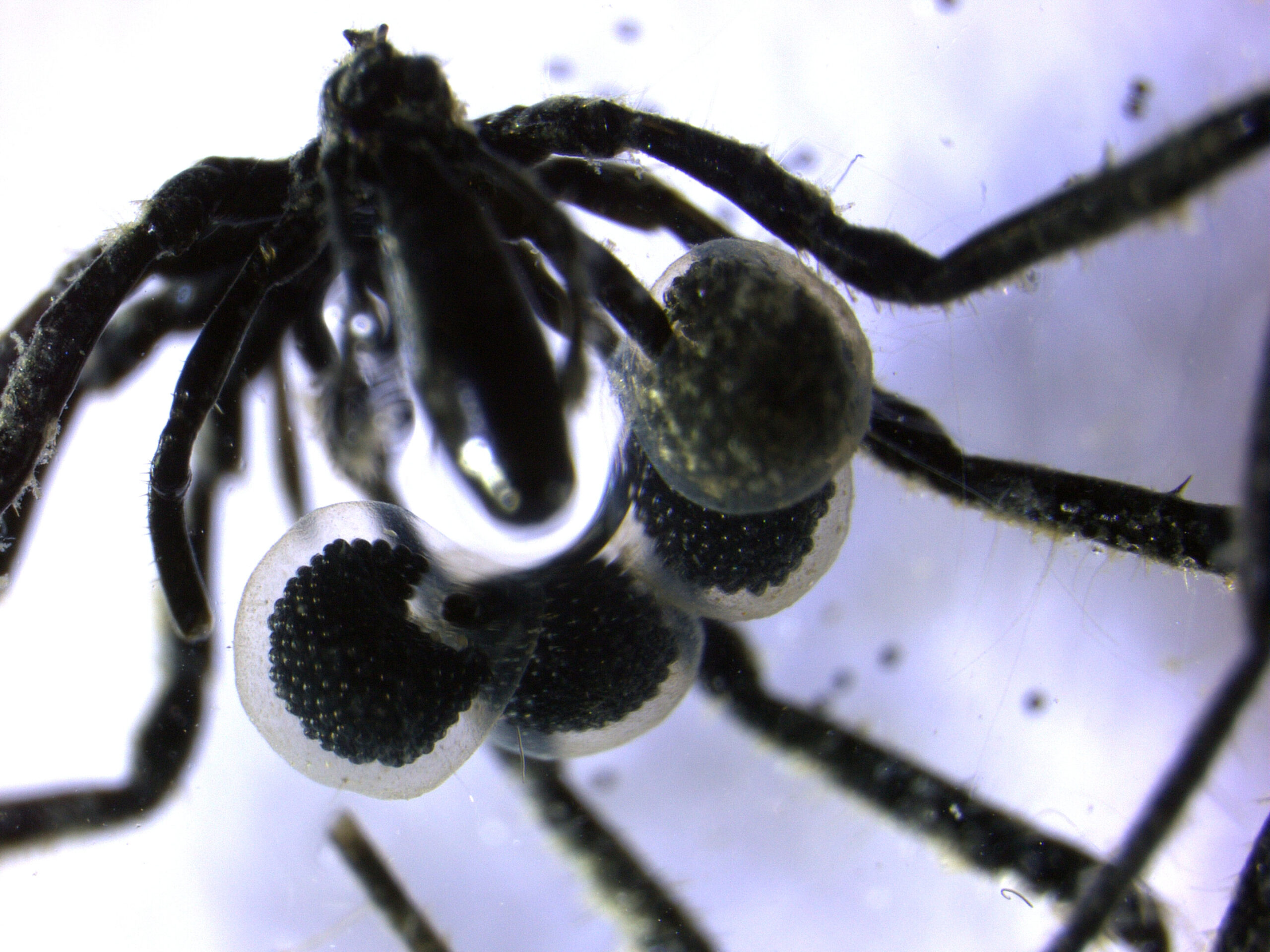
Sea spiders found farming methane-eating microbes in cultivated biofilm
How did your country report this? Share your view in the comments.
Diverging Reports Breakdown
Sea spiders found farming methane-eating microbes in cultivated biofilm
Sea spiders found farming methane-eating microbes in cultivated biofilm. Researchers concluded that Sericosura sea spiders farm these bacteria on their bodies. Like deep-sea crabs that feed on sulfur on their claws, these sea spiders appear to harvest their microbial microbiota directly. Farming methane means cultivating methane converters across chitin plates and harvesting them in a symbiotic choreography of grazing and growth, invisible to the eye but essential to life where sunlight never reaches the seafloor. The study was published in the Proceedings of the National Academy of Sciences, a journal of the U.S. College of Natural Sciences and the University of California, Los Angeles. It was led by Shana K. Goffredi, an assistant professor of biology at Occidental College, and was published by the journal Proceedings of The National Academy Of Sciences. It is the first study of its kind to show that methane-powered sea spiders feed on bacteria that oxidize methane, a process known as methanol-oxidation.
Male sea spider carrying egg cases preserved in osmium tetroxide. Credit: Shana K. Goffredi
A research team led by Occidental College has identified a previously unknown symbiosis; deep sea spiders that cultivate and feed on bacteria that oxidize methane.
Three undescribed species of Sericosura sea spiders were discovered to host dense layers of methane- and methanol-consuming microbes on their exoskeletons. The microbes not only thrive there but serve as a dominant primary nutritional source for the spiders.
Methane seeps are areas of the seafloor where methane gas escapes the Earth’s crust, bubbling up to form flourishing microbial ecosystems in the absence of sunlight.
Previous studies have shown that mussels, worms, and sponges at these sites rely on chemosynthetic bacteria for nutrition. Sea spiders have been observed in these chemosynthetic oases in mysterious abundance. Conventional feeding modes, such as predation or filter feeding, could not explain their numbers. Stomach content studies revealed no prey, prompting speculation that an alternative strategy might be at work.
In the study, “Methane-powered sea spiders: Diverse, epibiotic methanotrophs serve as a source of nutrition for deep-sea methane seep Sericosura,” published in the Proceedings of the National Academy of Sciences, researchers designed a series of experiments to test whether Sericosura sea spiders depend on methane-derived carbon.
Specimens were collected during expeditions to methane seep sites along the Pacific coast of North America, from California’s Del Mar and Palos Verdes seeps to Alaska’s Sanak seep. A total of 36 individuals were recovered, representing three new species.
Anterior head region of sea spider. Credit: Shana K. Goffredi
Metagenomic sequencing, 16S rRNA profiling, and fluorescence in situ hybridization mapped the exoskeletal microbiome, while nano-scale secondary ion mass spectrometry tracked 13C incorporation at single-cell resolution.
Field teams collected specimens with ROVs and Alvin dives. Live sea spiders were incubated aboard research vessels in seawater enriched with 13C-labeled methane and methanol.
During the shipboard experiment, the researchers added methane (and, in another test, methanol), whose carbon atoms were the “heavy” stable isotope 13C instead of the common 12C. Because that heavier form is rare in nature, any 13C later detected inside the animals or the bacteria could only have come from the artificial dose, making it an easy-to-spot “tag” for tracking where the methane-derived carbon went.
Dominant microbial taxa coating the spiders belonged to three bacterial families: methanotrophic Methylomonadaceae, and methylotrophic Methylophagaceae and Methylophilaceae. These microbes formed structured colonies on the exoskeleton and were also detected on egg sacs carried by males, suggesting a possible route of vertical transmission.
After five days, spider tissues showed significant 13C enrichment, up to 1.4 times natural abundance, demonstrating active assimilation of carbon from these compounds.
Electron and nano-scale imaging showed volcano-shaped clumps of methane-eating bacteria embedded in a sticky extracellular polymeric substance (EPS) across the spider’s cuticle.
After researchers dosed the seawater with heavy-isotope (13C) methane, that EPS layer and its resident microbes lit up with 13C, the same label soon appearing in the gut epithelium—yet the chitin shell beneath stayed at background levels. The pattern confirms that the EPS anchors and sustains the bacterial “crop,” which the spider then scrapes off and eats, rather than absorbing methane carbon through its outer shell.
Volcano-like microbial aggregations often showed signs of disruption, consistent with grazing behavior. Researchers concluded that Sericosura sea spiders farm these bacteria on their bodies and graze upon them with specialized mouthparts. Like deep-sea yeti crabs that feed on sulfur-bacteria cultivated on their claws, these sea spiders appear to harvest their epibiotic microbiota directly.
Sea spiders now join the growing list of small invertebrates that harness microbial metabolism in energy-poor ecosystems. Farming, in this realm, means cultivating methane converters across chitin plates and harvesting them in a symbiotic choreography of grazing and growth, tethered to molecules invisible to the eye but essential to life where sunlight never reaches.
Written for you by our author Justin Jackson, edited by Sadie Harley , and fact-checked and reviewed by Robert Egan —this article is the result of careful human work. We rely on readers like you to keep independent science journalism alive. If this reporting matters to you, please consider a donation (especially monthly). You’ll get an ad-free account as a thank-you.
More information: Bianca Dal Bó et al, Methane-powered sea spiders: Diverse, epibiotic methanotrophs serve as a source of nutrition for deep-sea methane seep Sericosura, Proceedings of the National Academy of Sciences (2025). DOI: 10.1073/pnas.2501422122 Journal information: Proceedings of the National Academy of Sciences
Source: https://phys.org/news/2025-06-sea-spiders-farming-methane-microbes.html
